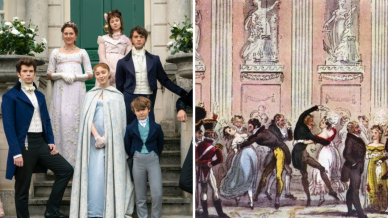You know those basic English grammar rules you learnt growing up? We hate to break it to you but it turns out that they might not all be true. Yes, adverbs are still 'doing words' and nouns are 'naming words'. But, it turns out that sometimes it is 'e' before 'i', and not just after 'c'...
Keep reading to discover three false grammar rules that most of us have been following this whole time!
1. Grammar myth: Never start a sentence with 'and' or 'because'
Growing up at school, your English teachers probably taught you to never start a sentence with a conjunction. What is a conjunction? It's a word used to connect sentences or other words or phrases together. Examples include 'or', 'because', 'yet', 'and', 'however', 'so', 'but', and 'for'.
But this English grammar 101 is actually false! We keep conjunctions in one sentence to make the message more succinct. But, even though it sounds messier, starting another sentence with 'and', 'because' or another conjunction is not grammatically wrong.
Example: A sentence can be 'I will be late because I missed my stop'. But you can also write 'I will be late. Because I missed my stop'.
2. Grammar myth: Only use 'an' before vowels' and 'a' before consonants
Many of us believe that we should use 'a' and 'an' after words beginning with consonants and vowels respectively. However, this is only half true.
The actual correct english grammar rule is that you should only use 'a' before words that start with a consonant sound. The same is true for 'an'; that you should only use it for words beginning with a vowel sound.
Example: When writing or talking, you wouldn't say 'a hour', but 'an hour'. Equally, you wouldn't write 'an unique piece' but 'a unique piece'.
3. Grammar myth: I before e, except after c
Your school would have likely taught you the english grammar basic 'i' before 'e' except after 'c' in English class. And it is a useful ditty for when you were learning how to spell. As we grow up and learn more grammar, we realize that there are many examples that don't fit the usual pattern.
Need some examples? Merriam Webster explains this with their own witty ballad.
'I before e, except after c
Or when sounded as 'a' as in 'neighbour' and 'weigh'
Unless the 'c' is part of a 'sh' sound as in 'glacier'
Or it appears in comparatives and superlatives like 'fancier'
And also except when the vowels are sounded as 'e' as in 'seize'
Or 'i' as in 'height'
Or also in '-ing' inflections ending in '- e' as in 'cueing'
Or in compound words as in 'albeit'
Or occasionally in technical words with strong etymological links to their parent languages as in 'cuneiform'
Or in other numerous and random exceptions such as 'science', 'forfeit', and 'weird.'
So there you have it! Three English grammar myths debunked and explained. We hope you enjoyed that bitesized grammar lesson.
If you're interested in growing your functional English skills please see here.
Or if you'd like to see our English literature courses, look at our online and in-venue courses here.




































